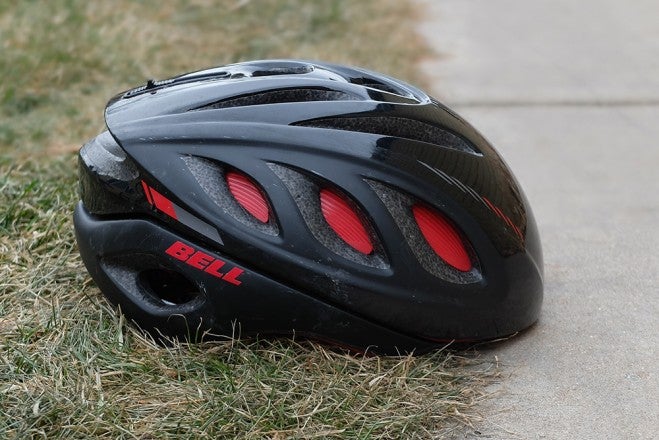Reviewed: The Bell Star Pro

With the vents closed, the Bell Star Pro is just as quick as other minimally vented helmets on the market. With the vents open, it is slightly cooler and slightly less aerodynamic, though the large section at the front with no venting gets pretty toasty on hot days. Photo: Logan VonBokel | VeloNews.com
The latest generation of road helmets walks the line between aero helmets, like the Giro Air Attack, and the ventilation-heavy helmets of years past. These helmets, like the Giro Synthe and Kask Protone, offer ventilation that comes close to the featherweight helmets of the mid-2000s but with a consideration for aerodynamics.
What separates the Star Pro from other aero helmets is a convertible vent system on the sides and rear of the helmet. A small slider opens and closes these vents. When closed, Bell claims the Star Pro is faster than all challengers, and with the vents open Bell claims the Star Pro is still quite slippery in the wind, which I’m tempted to believe based on the Star Pro’s ventilation—or lack thereof—even when the switch is open.
The only helmet with a similar open/close design is the Kask Infinity. But on that one, the whole top of the helmet slides open.
On the road
The Star Pro is by no means a lightweight, highly ventilated helmet for climbing on hot days. On hotter days in the sun, the Star Pro heats up, especially in the forehead area where it lacks traditional vents. It has brow vents instead, between the forehead pad and the EPS foam. Theses vents require a good bit of speed before air starts traveling into them and across the head. The brow padding is a bit lacking; while comfortable, it did not absorb sweat as well as I’d like.
When opened, the vents pull air across the back of the head. A decent-sized exhaust port opens up that pulls air from the brow vents. It’s with the vents open that I really noticed the front of my head getting hotter than the back. Still, this small amount of venting can make a big difference on a hot day compared to other sparsely ventilated aero road helmets. It cools far better than the Air Attack, for example. On a hot day with long climbs and slow speeds when air doesn’t flow easily through the Star Pro’s smaller vents, a lightweight helmet like the Lazer Z1 would be our choice.
The Star Pro is available with a large Zeiss shield lens. The lens is sharp enough, which is unsurprising considering Zeiss’ stellar reputation, and the shield snapped in and out of the helmet with ease. But I still prefer sunglasses and, admittedly, I only rode with the shield once.
Read the complete review at Velonews.com.